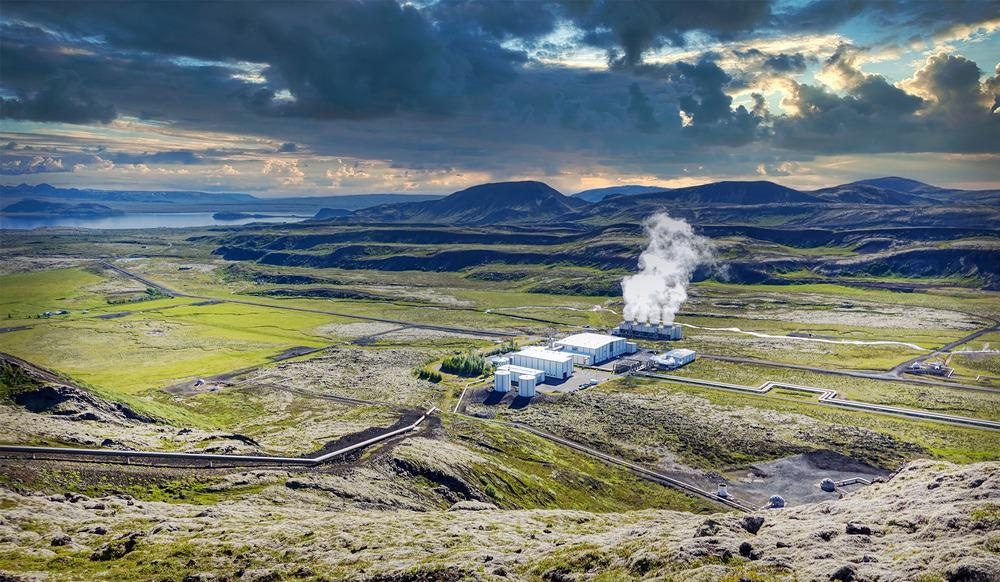Renewable energy technologies are providing an increasing proportion of the extensive power requirements needed for modern societies. However, the potential of underground energy remains largely untapped, mainly due to high starting costs. Companies such as Dandelion Energy are trying to deliver more geothermal solutions by lowering the cost of entry, enabling more people to experience the benefits of underground energy.

Image Credit: silky/Shutterstock.com
Geothermal Solutions: Tapping into Underground Energy Potential
The most effective way of making the most out of underground energy is to harness the natural thermal regulation of the ground for building heating and cooling.
Heating and cooling residential and commercial buildings contribute significantly to the rising demand for energy – second only to automobile ownership in terms of the demand it makes on domestic energy budgets. Geothermal solutions to heating and cooling replace this energy-intensive and often highly polluting activity with an environmentally sound alternative.
Removing the economic costs of building heating and cooling – using oil-powered heat sources, radiators and furnaces, air conditioning units, and so on – would also remove a significant amount of a domestic or commercial building owner’s total expenses.
The heating and cooling equipment used in geothermal systems consists of a series of pipes buried underground and running through the building. In winter, heat stored underground is moved through the pipes to warm the home. In the summer, heat from the home is moved underground as this same process is reversed.
How Do Geothermal Solutions Work?
The soil in the ground maintains consistent temperatures year-round from approximately five feet below the surface and deeper. The temperature is warmer than surface temperatures in winter and cooler than surface temperatures in summer.
Geothermal solutions work by transferring heat between the building on the surface and the soil underground.
A typical geothermal system includes a heat pump inside the home and a pipe system buried beneath the surface, the buried pipe system is referred to as a ground loop.
Pipes are filled with circulating fluid, which continuously moves heat throughout the home and ground loop. The heat pump keeps the whole system flowing similar to the heart in the blood system.
The system draws heat out of the air in the building in the summer, then pulls it underground where it is released and absorbed. In the winter, this process is reversed as heat is drawn from the solid underground and released into the building on the surface.
Benefits of Underground Energy
Geothermal solutions are a much more stable way of heating and cooling a building than reliance on oil-based or electrical systems. The price of running the pump does not fluctuate and increases with rising demand, and building owners using their own geothermal heating and cooling equipment need not worry about sudden shortages leaving their building frozen.
Unlike other renewable energy technologies, geothermal energy does not depend on specific types of weather. It is consistent throughout the year, and effective in a much wider variety of climates and surrounding environments.
As well as providing more energy independence for building owners, geothermal solutions are also typically a much more efficient means of heating and cooling buildings.
The heating and cooling equipment used in geothermal systems is also much more reliable and long-lasting than air conditioners and radiators, for example. Ground loops can last over 50 years with minimal maintenance, and heat pumps typically last 20 years.
Another benefit of this kind of system is that it provides heating and cooling in one, with one type of equipment to use and one installation to make.
Combined with the safety and convenience that comes from moving away from furnaces and gas systems, these benefits certainly make underground energy a more attractive solution to heating and cooling needs.
Why Don’t More People Use Underground Energy?
Despite these many benefits, many who could capitalize on the advantages of underground energy are still yet to make the switch. The main reason for this is the large initial investment cost required.
Digging deep into the ground and installing pipes and a heat pump can cost homes up to $50,000, and this cost obviously increases significantly for commercial buildings. Although for some people this large initial expense would be recuperated eventually in energy bill savings, such a cost is still a significant barrier.
Dandelion Energy is trying to make geothermal solutions more affordable. The company was established out of a Google X project which aimed to drive down the start-up costs for geothermal energy.
It has refined the installation process by using smaller, more efficient drills to make smaller holes in the ground outside of a building. Engineers then insert U-shaped pipes into these holes to create a closed ground loop for the geothermal solution.
With this improved approach and specialist equipment, Dandelion Energy can install a new ground loop in days rather than weeks.
These improvements have enabled Dandelion Energy to offer home geothermal solutions for only $18,000.
The company also offers a no-deposit financing option to make geothermal energy accessible to even more customers.
More adoption of renewable energy technologies, including geothermal solutions, is still needed. In the US, heating and cooling buildings make up approximately 11% of the country’s carbon dioxide emissions.
Replacing this activity with zero-emissions technology by harnessing underground energy is a simple, impactful, and cost-effective solution.
References and Further Reading
Soltani, M., et al. (2019). A Comprehensive Study of Geothermal Heating and Cooling Systems. Sustainable Cities and Society. [Online] https://doi.org/10.1016/j.scs.2018.09.036.
Dandelion Energy [Online] Available at: https://dandelionenergy.com/
Disclaimer: The views expressed here are those of the author expressed in their private capacity and do not necessarily represent the views of AZoM.com Limited T/A AZoNetwork the owner and operator of this website. This disclaimer forms part of the Terms and conditions of use of this website.